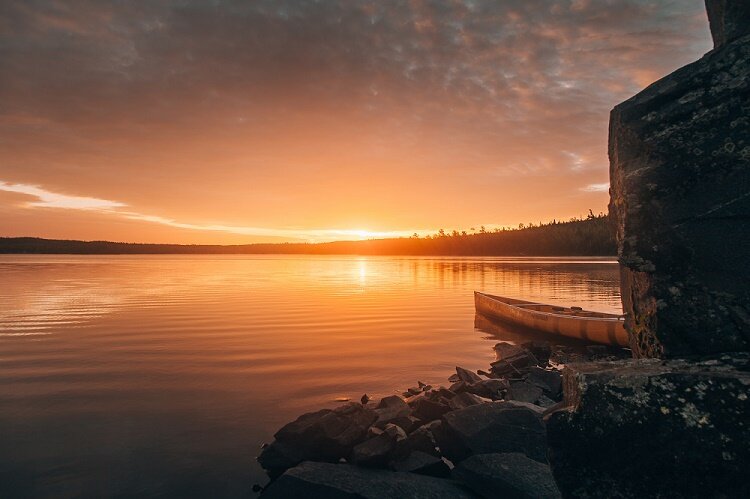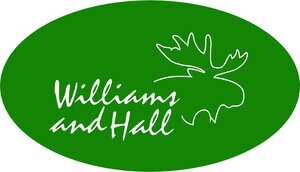
Boundary Waters FAQ
Frequently Asked Questions
What is Canoe Country?
Canoe Country consists of the BWCA – Boundary Waters Canoe Area Wilderness of northeastern Minnesota and the Quetico Provincial Park of Ontario, Canada. In total, Canoe Country contains more than 2 million acres of Northwoods wilderness with a couple of thousand lakes and 1,200 miles of canoe routes. Portages connect these lakes and canoe trails. As a result, opportunities also exist for backpacking on hiking trails, kayaking, and outstanding freshwater fishing for northern pike, lake trout, walleye and bass. Voyageurs crossed these routes hundreds of years ago.
How do I get started when planning my BWCA canoe trip?
Easy! Visit our Contact Us page and fill out our form, Request a Canoe Trip DVD for your trip or Scout trip by giving us a call at 218.365.5837 or visit our Reservations page. Otherwise if your in the research phase of your trip we always recommend visiting our Trip Planning pages on the website. Here you’ll find lots of information on routes, food planning, and much more! Finally, check out the Superior National Forest Service BWCA Trip Planning Guide here.
How are the bugs?
You can expect to encounter insects in the Boundary Waters, although not to the degree you may suppose The first hatches appear in early May. We deal with mosquitoes and some biting flies as the summer progresses. Depending on our weather, the bugs ease off as the summer goes on and disappear withe first frost. The most important thing to know is that we do not have any bug that will not respond to insect repellent. Additionally, the bugs are most active at dusk. This is about 9:30 p.m. in the Northwoods. Then, the choice is simple - hit the tent or put on insect repellent. We sell our favorite brands of bug juice in our store.
Can I bring my own canoe or kayak?
Yes. But depending on the weight of your canoe, we do recommend taking a look at our canoes because of how light they are based on what your plans are for portaging. We think canoeing is superior to Boundary Waters kayaking, due to weight and carrying capacity of canoes over kayaks.
How many visitors are allowed on a single BWCA permit?
The maximum number of people allowed on a permit is 9. If you need help with permits check out our permits page and contact Williams and Hall.
Do I need a Boundary Waters Canoe Area permit for a day trip?
Yes, permits are required. You need a permit anytime you are in the Boundary Waters. If you are only doing a day trip, you can fill out a self-issue permit located at most entry points. There is no charge or quota for these permits. We keep a supply of these in our outfitting store. Make sure you keep your half of the permit on you the entire day.
Do I need to bring a water filtration device, or is the water clean enough to drink?
The BWCA offers some of the freshest, most purified water in the lower 48. But we still recommend using tablets, a filtration system or boil your water before drinking it. A filtration device does not change the taste of your water and is convenient. Also, check in with our Williams and Hall shop for other options.
What is allowed for food and beverage containers?
Metal or glass containers are not allowed, except to contain fuel or medicine. All food and beverage items must be contained within a paper, plastic or foil container. All of these containers - metal, glass, paper, plastic and foil - must be carried out with you. We strictly observe No Trace wilderness travel practices.
What camp fire information do I need to know for my trip?
Campfires are only allowed in the metal grates at designated campsites in the BWCAW. In Quetico Park, you are allowed to camp anywhere. However, it is a good practice to make campfires in previously used sites. During dry conditions and high fire danger times, BWCA fire bans will be implemented and campers will not be allowed to have campfires. campers will need to pack a camp stove with appropriate fuel for cooking. Ask about any fire warnings when picking up your permits when you check in.
Do I need to reserve a Boundary Waters Canoe Area campsite?
Nope! All the campsites in the boundary waters are first-come-first-serve.
How much ground can we cover in an average day of canoeing and portaging?
Depending on how early you’re paddling on the water, and the number of portages in a day, you would roughly be able to cover about 10 to 12 miles in 6 hours.
Can I bring my dog on a canoe trip?
Yes, dogs are allowed in the Boundary Waters and Quetico Park. Dogs are required to be under leash control in the BWCAW and Quetico Park. Please don’t let them run after other visitors or wildlife. Remember to bring reusable food containers, a collar with tags (rabies vaccine, etc.) and make sure to clean up after them. Quetico Park requires current vaccine papers.
When is berry picking season in the Boundary Waters?
An extra benefit in coming to the Boundary Waters is seeing the wonderful varieties of delicious berries that can be found here. There’s a wide variety of berry’s that can be picked. Here’s the list of when it’s peak picking time!
Wild Strawberry – Mid June through July
Thimbleberry – July through late August
Gooseberries – July into August
Wild Raspberries – July through August
Blueberries – Late July to mid-August
If I want to come the Boundary Waters for fall colors, when should I come?
Fall is a wonderful time to come to the boundary waters. The best time to visit if you want to see the most vibrant fall colors would be during the second half of September. Give us a call for more specific weeks to visit. 218.365.5837
What is the best time of year for a canoe trip?
It depends on the type of BWCA adventure you are looking for. Fishing canoe trips are great anytime of the canoe season. Let your schedule dictate your visit You will catch fish anytime. Serious bass fishermen often love the bass spawn and associated topwater fishing in late May through early June. For the Classic or family trips, usually there are fewer visitors in the Boundary Waters Canoe Area and the Quetico Park during May and September. For Scout and Youth Group High Adventures, let your visit be controlled by your group’s scheduling needs. The water warms up and the bugs decrease as the summer goes on. The fall colors of the Boundary Waters in September can be spectacular and the crowds are low.
What do I need to know about fishing licenses and possession of fish?
Fishing licenses are required within either wilderness area. Anyone 16 or older, who chooses to fish in the BWCA, is required to have a Minnesota fishing license. People from out-of-state must purchase an Non-resident Minnesota fishing license.
Individuals 18 years or older choosing to fish are required to purchase a fishing license for the Quetico Park. Williams and Hall can help you with permits and fishing licenses.
Do I need a life jacket when canoeing or boating?
Those traveling by either boat or canoe must have a US Coast Guard approved life jacket in the watercraft. Also, there must be one life jacket for each person in the watercraft. The life jacket must be readily accessible for use.
Will my cell phone work in the Boundary Waters and Quetico?
Probably not. Boundary Waters cell phone coverage is spotty cell phone coverage as you cross into the wilderness. And, as you move toward the interior of the Boundary Waters you will not have coverage. There are no cell towers within the BWCA or Quetico which limits cell service.
What is the average summer temperature in the Boundary Waters
Great question! When planning your trip you should always check what the weather is going to be like the week you plan your trip. You can also visit our weather page with a 7-day forecast.
May
The Average High ranges from 58º to 69º with the Average Low 34º to 45º | Cloud Cover – May tends to be overcast 48% to 54% of the month. | Precipitation – In May the average chance of rain daily is 27% to 35% with Rainfall – For the month averaging 1.9 to 3.3 inches.
June
Average High ranges from 70º to 75º
Average Low ranges from 45º to 53º
Cloud Cover – June tends to be overcast 41% to 48% of the month.
Precipitation – In June the average chance of rain daily is 35% to 42%
Rainfall – For the month averaging 3.0 to 3.6 inches.
July
Average High ranges from 75º to 77º
Average Low ranges from 54º to 55º
Cloud Cover – July tends to be overcast 31% to 40% of the month.
Precipitation – In July the average chance of rain daily is 33% to 42%
Rainfall – For the month averaging 2.6 to 3.5 inches.
August
Average High ranges from 71º to 76º
Average Low ranges from 50º to 55º
Cloud Cover – August tends to be overcast 31% to 37% of the month.
Precipitation – In August the average chance of rain daily is 31% to 33%
Rainfall – For the month averaging 2.0 to 2.8 inches.
September
Average High ranges from 59º to 71º
Average Low 40º to 50º
Cloud Cover – September tends to be overcast 37% to 47% of the month.
Precipitation – In September the average chance of rain daily is 27% to 32%
Rainfall – For the month averaging 2.5 to 2.8 inches.
